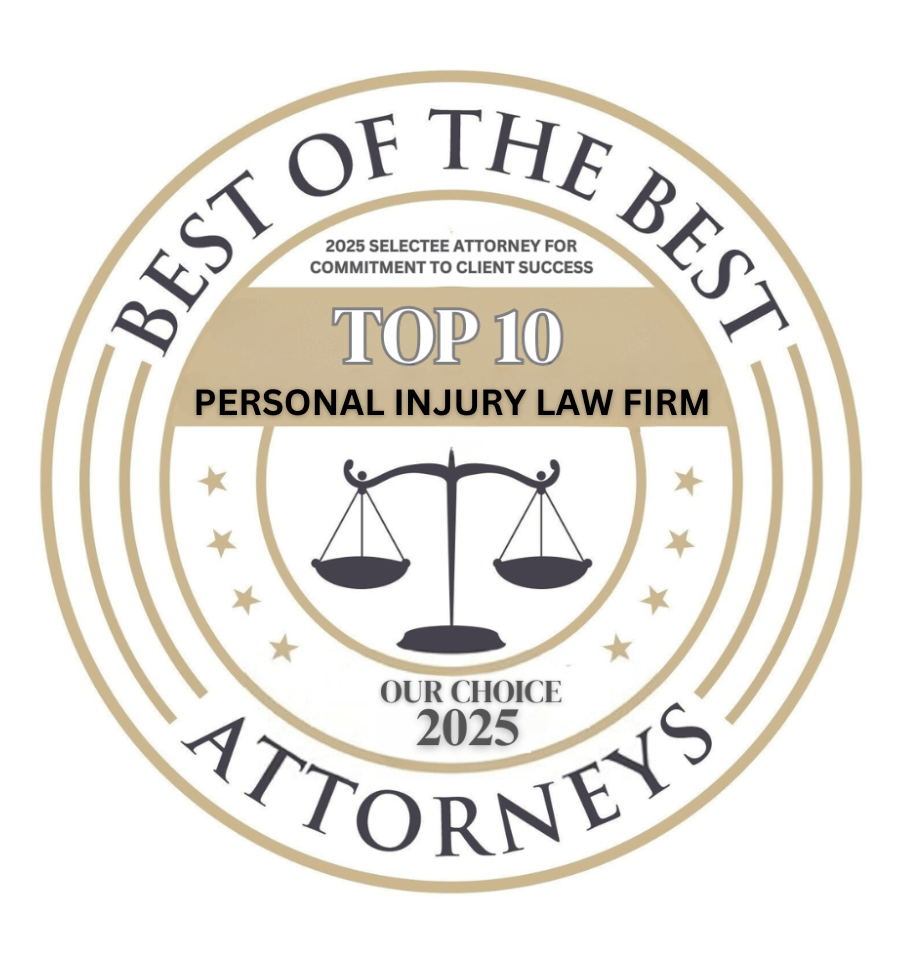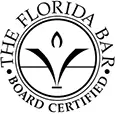Common Types of Injuries
Boohoff Law, P.A. — Auto Accident Lawyers represents people who have suffered injuries because of someone else’s poor decisions or negligent actions. This includes car accidents, slip-and-fall incidents, and dog-bite attacks. The injuries our clients endure take many different forms, but there are some common types of injuries we see often when working on personal injury claims.
It may be helpful to take a closer look at some of the more serious injuries we see in these types of cases. How frequently does each type of injury occur? What are some of the costs and difficulties someone might face because of an acute injury?
We explore these questions below and, when available, we’ve linked the common injuries to related resources from UW Medicine.
If you or a loved one sustained one of the injuries listed below or other injuries caused by someone else’s recklessness or negligence, contact Boohoff Law today to learn more about your potential right to recover compensation.
Traumatic Injuries
As personal injury lawyers, we frequently represent clients who sustained injuries in violent accidents, such as motor vehicle accidents, construction site falls, and other incidents in which the human body suffers significant trauma. Here are some of the different types of injuries that result from these circumstances.
Traumatic Brain Injury
A traumatic brain injury (TBI) occurs when the brain sustains damage as a result of a jolt, blow, or penetrating injury. Any sort of impact can cause a TBI, from hitting your head in a car accident to a particularly violent collision while playing contact sports like football or lacrosse. Penetrating injuries often result from gunshots, explosions, or falls. TBIs are common car accident injuries.
In a TBI caused by an impact, the brain sustains damage when it moves around within the skull, which can cause tissue damage, bleeding, and swelling. With a penetrating injury, the brain sustains direct damage from the object that penetrated the skull, as well as from secondary bleeding and swelling.
TBIs range from mild to severe, although it is important to remember that any head injury should be taken seriously.
If you sustain a blow or impact to your head in an accident, seek emergency medical treatment right away. Even a seemingly mild head injury can have severe and costly long-term consequences if not treated promptly.
Symptoms include a loss of consciousness, nausea, motor difficulty, headache, dizziness, and cognitive difficulty. Some symptoms happen immediately, whereas others take time to develop. Likewise, some symptoms resolve on their own, whereas others may require interventions including surgery, medication, and long-term physical and occupational therapy.
Spinal Cord Injuries
An acute spinal cord injury (SCI) happens when the spinal cord (the bundle of nerves running through your vertebrae) sustains a bruise or tear, which in turn disrupts your brain’s ability to send messages to the rest of the body. Similar to brain injuries, spinal cord injuries commonly result from violent impacts, such as in a car accident, contact sports injury, or bad fall, or from a penetrating injury caused by a gunshot wound or explosion.
Spinal cord injuries typically interfere with a person’s motor functions. In mild cases, the damage results in numbness and weakness in parts of the body. In more severe cases, these injuries cause partial or total paralysis. The extent of paralysis depends upon where the spinal cord injury occurs. The closer to the neck, the more of the body that’s affected.
If a spinal cord accident victim is lucky, then over time they will recover some feeling or function in the parts of their body affected by the injury. But frequently, a spinal cord injury causes permanent and irreversible loss of function. It’s common for these patients to have permanent disabilities and require mobility devices or modifications to their homes or vehicles. The cost of treating and living with a spinal cord injury can total millions of dollars in medical bills and other expenses over a lifetime.
Traumatic Amputations, Crushed Limbs, and Complex Fractures
At Boohoff Law, some of the car accident injuries we’ve seen in our clients have resulted in serious, life-altering injuries to their limbs. Three of the most serious injuries we’ve seen car accident victims suffer include:
- Traumatic amputations, in which a limb or extremity is partially or totally severed from the body as a result of violent incidents such as a severe car accident or workplace injury involving machinery with moving parts.
- Crushed limbs, in which a limb gets pinned or compressed between or under heavy objects. We frequently see crush injuries after car crashes or affecting people working with heavy objects.
- Complex (or comminuted) fractures, in which a bone sustains three or more breaks.
All of these injuries, as well as less complicated fractures of a bone in one or two places, can result in long-lasting disability. Obviously, in the case of a traumatic amputation of a limb or extremity, the patient needs emergency medical attention to survive the initial injury.
If the limb or extremity cannot be saved, the patient may need a prosthetic to regain normal function.
In the case of crushed limbs and other complex fractures, the patient’s bones may heal (often after multiple surgical interventions), but limb function may never return to its pre-injury status.
Injuries to limbs and extremities of this nature can seriously inhibit the ability to work and enjoy life as one did before the injury. Losing limb function often strains a person’s long-term earning capacity.
Burns
Burns are damage to skin and tissue caused by exposure to heat, caustic chemicals, radiation, and/or electricity. They are extremely painful even when mild. Severe burns are life-threatening emergencies. Doctors classify burns on a scale:
- First-degree burns affect only the outer layer of the skin (known as the epidermis). They appear red, tender, and sensitive to touch and heat. First-degree burns tend to heal on their own with basic first-aid treatment.
- Second-degree burns damage both the epidermis and some portion of the layer of skin beneath it (the dermis). They appear as red, blistered, and swollen. They will typically heal without significant complication if they receive prompt medical treatment but may leave a scar.
- Third-degree burns destroy the epidermis and dermis. They leave the area of burn looking charred. In extreme cases, they also burn tissue and bone beneath the dermis (sometimes this is referred to as a fourth-degree burn). Third-degree burns are life-threatening emergencies. They require immediate, specialty medical care, and have the potential to require long-term medical intervention. They always leave scarring and may also cause disability.
Clients of Boohoff Law have sustained burns in a wide variety of activities. Exposure to flame is a common cause of severe burns. So is exposure to caustic chemicals at work. Electrical burns have been known to happen when heavy equipment touches live electrical wires. Fires can erupt in car crashes and cause serious injuries to occupants.
The cause and extent of the burn, among other factors, affect its course of treatment. For anything other than a mild first-degree burn, call 911 or drive directly to your local emergency room for immediate treatment.
Soft-Tissue Injuries
Not all severe injuries threaten a person’s life or long-term livelihood. Clients of Boohoff Law frequently come to us after sustaining serious soft-tissue injuries in a wide variety of activities, from accidents to slip-and-falls to workplace injuries and sports injuries. These common injuries often heal over time. That doesn’t mean, however, that they’re inconsequential.
The term soft-tissue injuries generally refers to damage to muscles, ligaments, and tendons. Sprains, strains, tears, bruises, and tendonitis are all forms of soft-tissue injuries. Whiplash, which is a common injury in an auto accident, is also a sometimes severe form of soft-tissue injury.
Everyone has experienced a soft-tissue injury at some point in their life, usually in the form of an ankle sprain or muscle strain. Most of these injuries heal over time with rest, over-the-counter medication, and relatively simple first aid. But, sometimes, soft-tissue damage creates chronic injuries that last months or years, and require surgical care, long-term medication, and physical or occupational therapy to treat. Soft-tissue injuries may weaken tissue, making it more prone to re-injury.
They also cause nerve damage, resulting in motor deficits.
Victims of even a minor soft-tissue injury should seek medical attention whenever an injury does not respond to the basic first aid regimen of RICE: Rest, Ice, Compression, and Elevation, supplemented with over-the-counter pain medications like ibuprofen. Failure to treat a soft-tissue injury can lead to long-term health complications for a condition that otherwise would have healed completely.
Other Types of Accident Injuries
Here are some of the more common types of accident injuries clients seek our help with at Boohoff Law.
- Facial injuries
- Knee injuries
- Chest injuries
- Neck injuries
- Internal injuries
- Internal bleeding
- Back injuries
- Leg injuries
- Broken ribs
- Shoulder injuries
- Psychological trauma
- Post-traumatic stress disorder
Different Causes of Injuries
Negligence or carelessness often leads to accidents or incidents that result in serious and preventable injuries. Some of the situations that result in injuries include:
Car Accident Injuries
Motor vehicle accidents are a leading cause of injuries in our clients. Our city streets are often packed during rush hour. Even commuters who take a bus or ride a bicycle to work are at risk of being involved in a car crash. A car accident injury can alter a person’s life and the lives of their family members in an instant. The medical expenses that result from car accidents can be overwhelming. That’s why Boohoff Law is dedicated to helping victims of car accidents caused by negligent parties recover compensation for their damages.
Medical Malpractice, Medical Product Injuries
When doctors, pharmacists, and other healthcare-related professionals and providers take actions that harm a patient, it’s not always apparent to the person injured what has happened. Medical professionals do not set out to harm patients, and manufacturers of drugs and medical products aim for them to be safe and effective. But, sometimes doctors make mistakes, and sometimes manufacturers sell healthcare products that are defective or dangerous.
When these tragedies occur, patients sustain a wide range of injuries. An error during surgery could cause permanent nerve damage. A faulty medical device implanted in a person’s body could damage organs and soft tissue. The wrong dosage of a drug, or a drug administered without regard to potentially harmful interactions, could result in organ failure and death.
Nursing Home Injuries
Elderly or disabled residents of Seattle-area nursing facilities are often vulnerable to maltreatment and abuse. Any number of injuries can result from nursing home abuse and neglect. There are physical injuries, such as bruises, stress fractures, and broken bones, that can result from direct physical abuse or from falls when residents are left unattended. There are also psychological injuries inflicted by verbally or emotionally abusive staff members or other residents. Frequently, health complications result from the failure to provide adequate medical supervision and treatment.
The best defense against nursing home injuries is to visit your loved one regularly at a nursing home. Any marked changes in your loved one’s demeanor or emotional state, any unexplained injuries or sudden health complications, and any arbitrary restrictions the nursing home places on your access to a loved one, could all serve as signs of abuse or neglect.
Exposure Injuries
Exposure injuries result from long-term exposure to toxic substances or conditions. They can take the form of diseases and/or chronic health complications, such as cancers, respiratory ailments, and nervous system disorders. They’re difficult to pinpoint, because exposure may become toxic only over a long time, and it may take years after the exposure for their ill effects to emerge. In addition to health conditions, exposure can also lead to long-term psychological complications by forcing a person to worry for years and years about developing a health condition caused by the exposure.
Many exposure injuries happen at work. Employers have significant obligations to maintain safe workplaces and to provide safety equipment for workers handling toxic substances or materials. However, that has not always been the case and, even today, some employers put their employees at risk. What’s more, toxic exposures can happen in other locations, too. Building materials and mold, for instance, may affect the health of the family living in a home or of children attending a school.
If you or a loved one has been diagnosed with a rare disease, or have experienced a steady and unexplained decline in health for no obvious reason but which started when work or living conditions changed, then exposure could be to blame.
Your Seattle Personal Injury Attorney, No Matter The Type or Cause
Tatiana Boohoff and her team at Boohoff Law, P.A. — Auto Accident Lawyers have years of experience helping clients recover compensation to help them pay for the costs associated with a wide range of injuries. No matter the type of injury, the experienced, compassionate legal professionals at Boohoff Law have the resources and know-how to investigate its causes, calculate your financial needs, and pursue insurance companies and legally liable parties for every penny of compensation you deserve.
To schedule a free, confidential, no-obligation consultation with a skilled Seattle personal injury attorney, contact the team at Boohoff Law, P.A. — Auto Accident Lawyers today online or by phone at (877) 999-9999. We’re here to help, no matter what your injury.
Free Consultation
We Are Here For You 24/7
Reviews
– Elissa M.
“Really pleased with Boohoff Law! Received immediate responses when I had any questions. Treated amazingly by all staff … made this process a true breeze!”
– Caitlyn M.
– Brandy K.
Related Posts
What Happens if the Trucking Company Claims I Was in the Blind Spot?
Wrecked by a Semi in a Pile-Up? How To File a Claim if You Were Injured in a Multi-Vehicle Truck Crash
Navigating the Maze of Liability: When an Out-of-State Motorist Causes Your Accident
Recovery is personal.
We’re here for you.
We’re close by. And if you can’t make it to us, we’ll meet you where you need us, at home or in the hospital.
You're better off with Boohoff.











The information on this website is for general information purposes only. Nothing on this site should be taken as legal advice for any individual case or situation. This information is not intended to create, and receipt or viewing does not constitute, an attorney-client relationship.
available 24/7
(877) 999-9999
